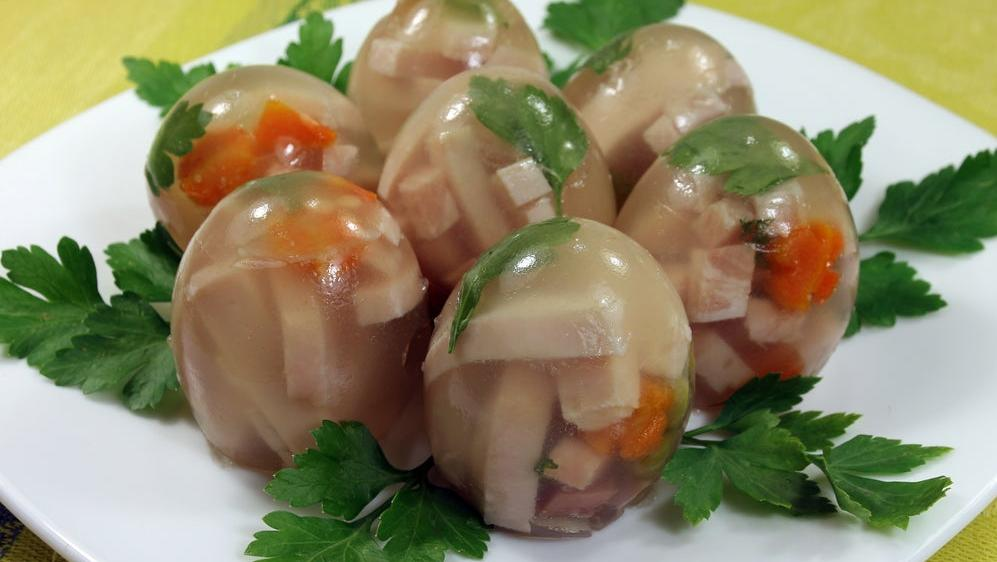These Weird '70s Foods Deserve To Be Celebrated
For the creator of 70s Dinner Party, a popular social media account, it’s all about finding joy in recipes.
We may receive a commission on purchases made from links.
If you were presented a recipe for "Three P Salad," do you think you could guess what the three P's are? You'd probably be way off, since this salad somehow includes a combination of peas, pickles, and peanuts, all held together with mayonnaise and literally nothing else. Or how about pinpointing the mystery ingredient in "Mystery Fruit Salad"? We'll help you out: This recipe involves apples, whipped topping, and—brace yourselves—chopped-up Snickers bars. If any of this surprises you, then you need to spend more time with cookbooks from the 1970s. That's where 70s Dinner Party comes in.
70s Dinner Party, the popular Twitter and Instagram account, isn't new; it's been around for almost a decade and remains as popular as ever. With nearly 180,000 Twitter followers and 132,000 Instagram followers, the showcase of vintage cookbook finds and old food advertising has plenty of fans who delight in perusing its oddities. I'm one of them.
"Part of the reason I did it was a reaction to the entire wellness industry, which I find so sickening," Anna Pallai, creator of 70s Dinner Party, tells The Takeout, adding that she was tired of the "virtue signaling" that persists on social media when people only ever post "healthy" foods. "I would much rather something is fun and looks fun. Ideally, it tastes nice as well, but I really don't like that online craze for posting some seeds you've eaten. It's not a joyous thing. So I think that's what drew me to it as much as anything. The idea that food be fun and pleasurable and silly."
Pallai, who lives in London, explained that she started the project after leafing through mail-order cookbooks her mother used to collect in the 1970s. One was a collection of recipe books by Robert Carrier, who Pallai said was influential in bringing a global perspective to the British palate. Though some of the recipes strike us as downright bizarre in the 21st century, much of that comes down to their lack of context.
"I don't like to be mean about it, because it's very easy to be snooty in hindsight," she said, "but Robert Carrier did great things for the food culture in this country and introduced a whole new way of eating, and I think there's merit in that."
There were others besides Carrier, too, though Pallai makes a conscious decision not to say where she's sourced an image or a recipe from on the 70s Dinner Party accounts.
"It's meant to be lighthearted," she explained. "It's why don't credit where things are from. I don't like the idea of making fun—it's the equivalent of a pile-on. There's no need to know. If people know where it's from, they know where it's from."
Pallai, who loves to cook, says she hasn't exactly borrowed techniques or recipes from the '70s cookbooks she's been scouring for content all these years, but she has attempted to recreate some of the more outlandish concoctions, particularly food shaped like animals. She creates a lemon pig each year for good luck in the New Year, and has made boiled egg penguins.
There's one recipe she'll never try again, though. In 2016, Pallai published a book based on her findings for the account titled 70s Dinner Party: The Good, the Bad and the Downright Ugly of Retro Food. Naturally, at the book's launch party, the menu was composed of recipes within the book. Boiled egg swans, which had pipe cleaners for necks, were a hit. But a sandwich loaf lives on in Pallai's memory as one of the worst things she's eaten.
"I had a sandwich loaf, which is a bit pedestrian," she said. "You cut it horizontally and have a different filling in every layer, and you frost the whole thing in a cream cheese mayonnaise spread. It was one of the most disgusting things I've ever tasted. The sticky, cloying nature—ugh. That will live with me for a long time."
As for why the account is, and has remained, so popular, Pallai said she thinks there's one of two reactions that people usually have to 70s Dinner Party: Followers are either too young to remember the recipes and therefore find a lot of the dishes absolutely wild, or they are old enough to remember the recipes and what they tasted like, reveling in the nostalgia (or reliving the repressed memory, take your pick).
Pallai has, after years of leafing through '70s cookbooks, noted some recurring themes throughout their pages. There's an overall playfulness to the presentation of food, and the recipes speak to our desire to create things that look nice but don't take too long to make. As a result, there are a lot of dishes that involve mixing processed foods together.
"I think it was at that point where women were working, but they were expected to be the provider at home as well," she said. "So there's a combination of using ready-made food, but kind of making it look fancy."
It's not only the recipes themselves that have revealed recurring themes—the commenters have consistently demonstrated certain patterns of behavior, too. Sometimes Pallai will post a highly processed concoction that horrifies many users, but Midwesterners won't see what the big deal is.
"Particularly in the Midwest, there's lots of people who say, 'That's perfectly normal, we still have that.' And I'm like, 'No, that's not normal!'" Pallai said, laughing.
Ultimately, though, 70s Dinner Party is meant to spark delight, not debate. When things get heated in the comments, folks are missing the point.
"I think, 'You are literally fighting under a picture of a hot dog,'" Pallai said. "'What is wrong with you?'"
